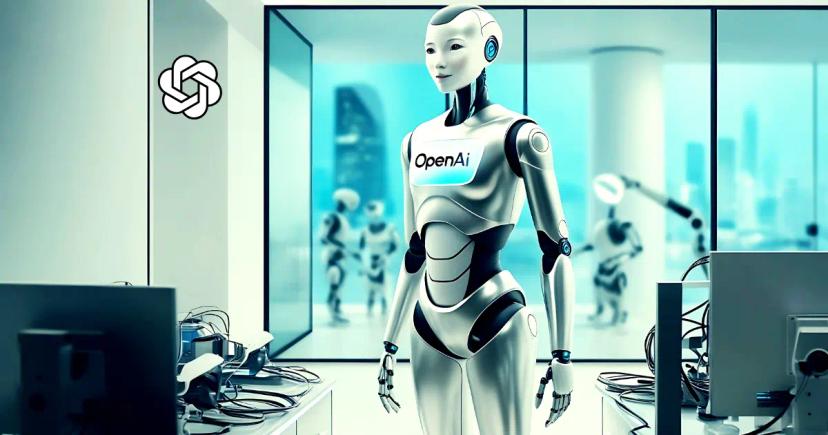Tech News Hub
Nvidia and Apple Vision Pro Collaborate to Revolutionize Humanoid Robotics Learning
Robotics have been pivotal to Nvidia's meteoric rise in recent years. This technological powerhouse has consistently pushed boundaries, with significant strides in humanoid robotics, such as the unveiling of GR00T in March last year. GR00T was a landmark innovation, garnering partnerships with key players in the industry like 1X Technologies, Agility Robotics, Apptronik, Boston Dynamics, Figure AI, Fourier Intelligence, Sanctuary AI, and Unitree Robotics.
At CES this year, Nvidia CEO Jensen Huang showcased the next generation leap for GR00T in Blueprint. Imitation learning is one of the fundamental methods used to instruct robots in acquiring new capabilities, particularly important in humanoid robotics where actions appear to be anthropomorphic.
What is Imitation Learning?
Imagination learning is a simple yet potent concept. A human performs an action, and the robot imitates it. This method is particularly useful in the automation of industrial settings, like manufacturing and logistics, where early humanoid robots are being used.
Blueprint enhances this learning by including teleoperation, where robots can be trained remotely. Actions are digitized and replicated in a simulated environment, enabling rapid adaptation and skill acquisition.
The Role of Apple Vision Pro
What really makes GR00T Blueprint stand out is its integration with Apple's Vision Pro, a next-generation mixed-reality headset. Users can perform tasks in real-time, captured as digital twins through Vision Pro. These virtual replicas become training modules for robots, enabling precise and repetitive execution in simulation before deployment.
It helps bridge the gap between human intent and robot execution, creating a scalable and efficient way of training humanoids in real-world applications. It helps robots smoothly find their places within human environments on factory floors, warehouse logistics, and much more.
Why It Matters
Nvidia's integration of Vision Pro is a major milestone in robotics and mixed reality. With advanced chipmaking capabilities combined with innovative instructional tools, Nvidia is shaping a future where robots not only emulate human actions but do so with unparalleled accuracy and efficiency.
Conclusion
This combination of Nvidia's GR00T Blueprint and Apple Vision Pro shows how technology giants can cooperate across firms to redefine industries. With developments like these, humanoid robots are increasingly necessary for modern workflows and promise a more efficient automated future.
Related Stories:
Top Stories:

OpenAI Explores Humanoid Robotics: A New Chapter in AI Innovation
OpenAI, the maker of ChatGPT, is said to be considering making its humanoid robot. According to The Information, this is part of a larger move by OpenAI to bring artificial intelligence into the physical world. The report, based on information from people familiar with the discussions, explains how OpenAI has developed an interest in robotics despite its earlier withdrawal from the field.
A History of OpenAI in Robotics
OpenAI’s involvement in robotics is not entirely new. The company has previously supported the field through strategic investments. Notable beneficiaries include Figure, 1X, and Physical Intelligence, a firm dedicated to “general-purpose AI.” However, OpenAI’s direct robotics pursuits came to a halt in 2021 when the company discreetly closed its dedicated robotics division.
Since then, the landscape of robotics has changed significantly. Breakthroughs in hardware and AI technologies have propelled the development of humanoid robots, presenting new opportunities for OpenAI to re-enter the field. Nevertheless, the competitive nature of the robotics industry may pose challenges for OpenAI if it intends to revive its robotics ambitions.
Challenges and Opportunities
Rebuilding a robotics division would mean that the company has to bridge quite a gap in terms of expertise and capabilities. It would require the company to catch up with the established players who are already way ahead in humanoid robotics. It could use either its expertise in AI systems or acquire startups with advanced robotics capabilities.
At the same time, humanoid robots equipped with cutting-edge AI could transform industries like healthcare, logistics, and customer service. These possibilities align with OpenAI’s mission to deploy AI in ways that benefit humanity as a whole.
What's Next?
Although OpenAI hasn't announced any specific plans to build a humanoid robot, even the concept gives an indication of the forward-thinking approach the company has.
Whether it is through partnerships or in-house development, the potential entry of OpenAI into humanoid robotics can change the future of the field.
Conclusion
The possibility of OpenAI entering humanoid robotics clearly shows its dedication to artificial intelligence. The future of robotics will be defined by the choices that OpenAI makes about its evolution.
Related Stories:
Top Stories:
